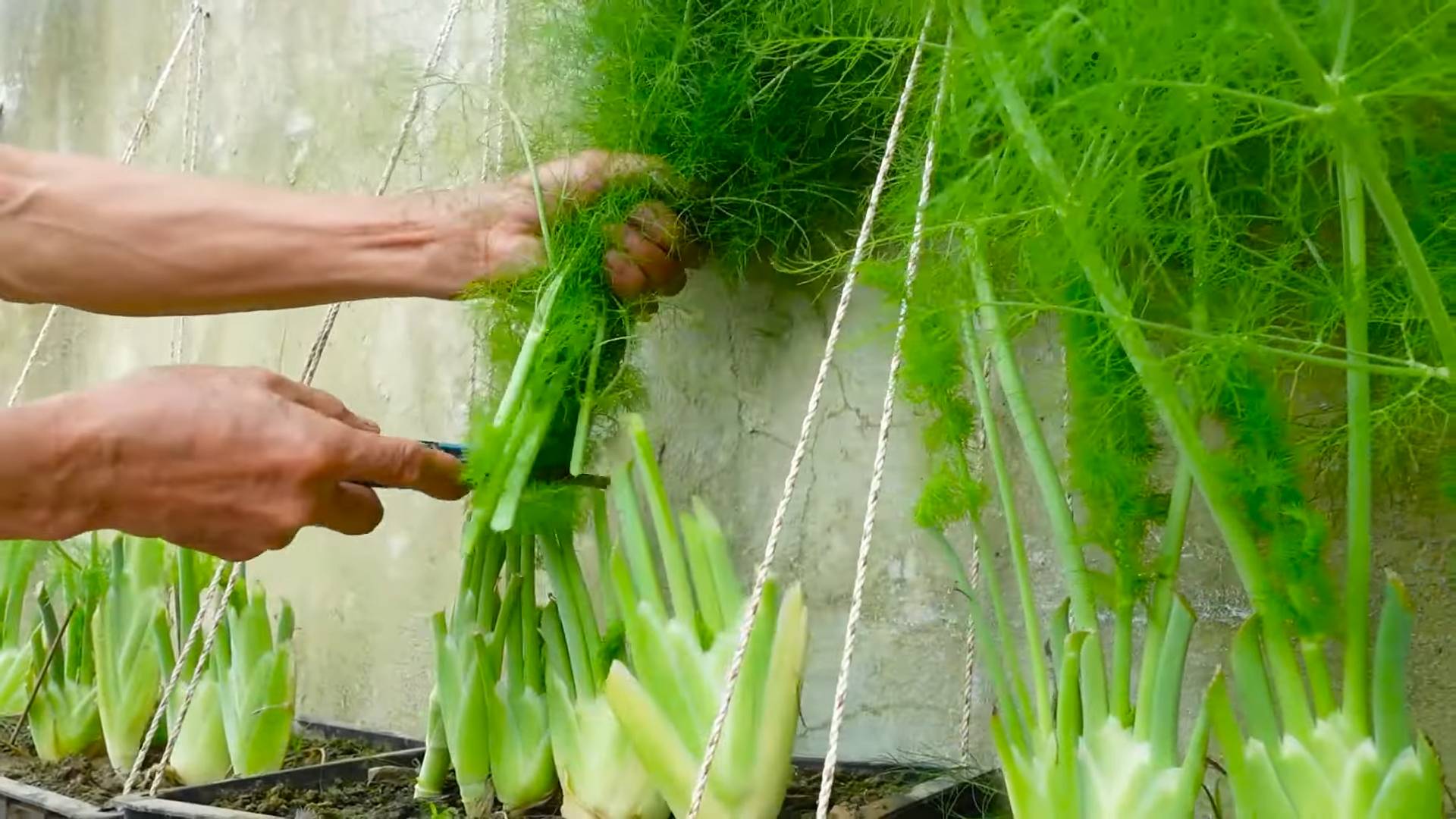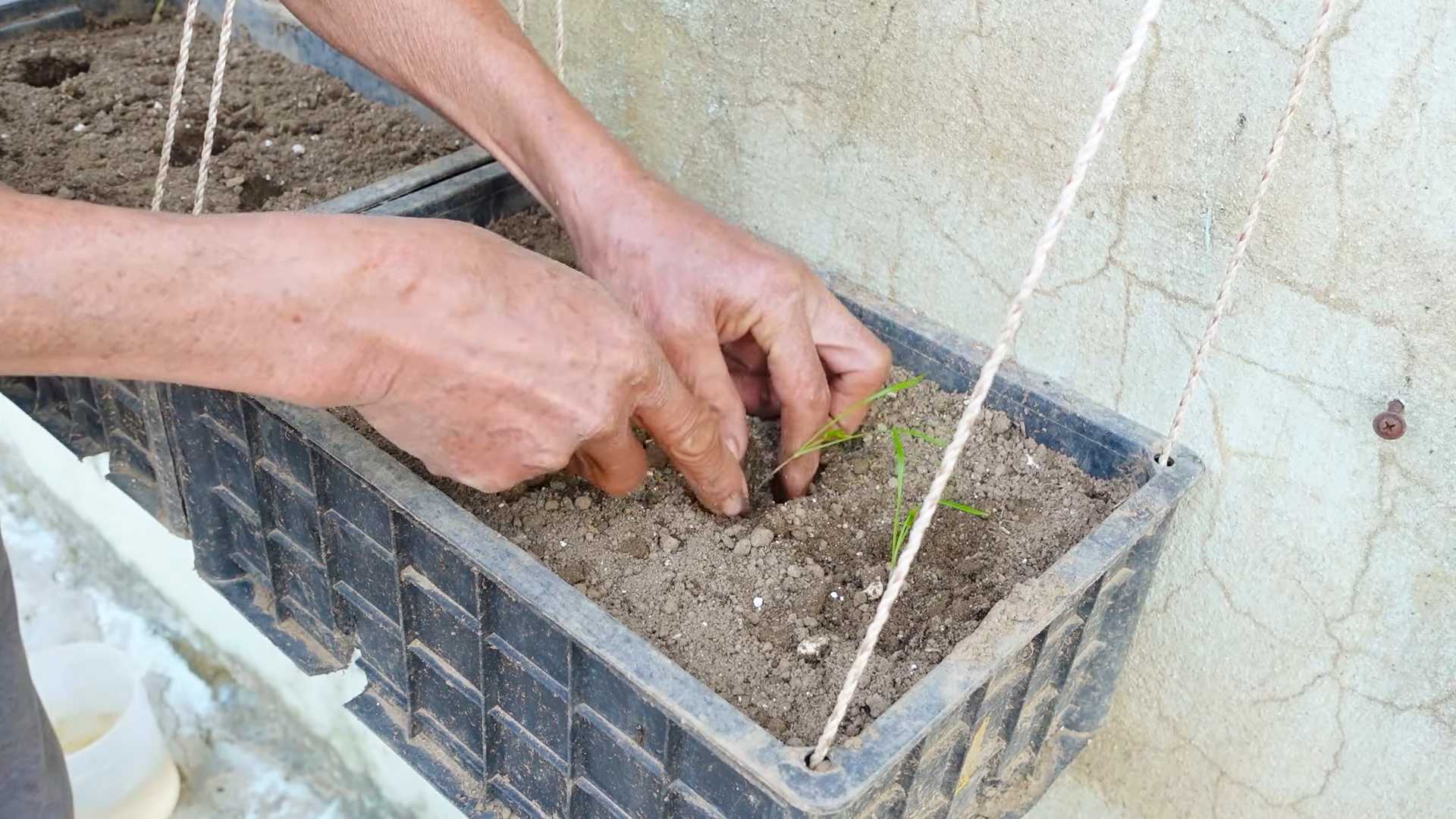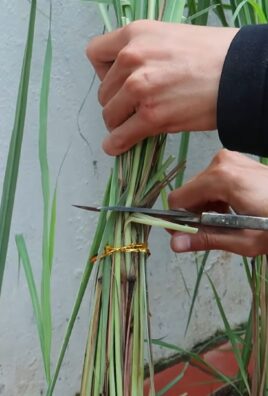Growing Dill Indoors can feel like a secret superpower for any home cook or gardening enthusiast! Imagine having fresh, fragrant dill readily available, no matter the season, right on your kitchen windowsill. No more sad, wilted bunches from the grocery store – just vibrant, flavorful dill whenever you need it.
For centuries, dill has been cherished not only for its culinary uses but also for its medicinal properties. Ancient Egyptians used it for soothing digestion, while the Romans believed it brought good fortune. Today, we might not be warding off evil spirits with dill, but we can certainly elevate our dishes and bring a touch of freshness to our homes.
But let’s be honest, not everyone has a sprawling garden or the perfect outdoor conditions for growing herbs. That’s where the magic of indoor gardening comes in! This DIY guide is your ticket to successfully growing dill indoors, even if you have limited space or a less-than-green thumb. I’ll share my tried-and-true tricks and hacks to ensure your dill thrives, from choosing the right pot to providing the perfect amount of sunlight. Get ready to enjoy the delightful aroma and taste of homegrown dill all year round!

Growing Dill Indoors: A Beginner’s Guide to Fresh Herbs Year-Round
Okay, so you want fresh dill whenever you need it, regardless of the season? I get it! Store-bought dill can be expensive and sometimes looks a little sad. Growing your own indoors is surprisingly easy and rewarding. Let’s dive into how you can have a thriving dill patch right on your windowsill!
Choosing the Right Dill Variety
Not all dill is created equal, especially when it comes to indoor growing. Some varieties are just too big and bushy for a container. Here are a few that I’ve found work best:
* ‘Dwarf Fernleaf’: This is my go-to. It’s compact, reaching only about 18 inches tall, and it’s slow to bolt (go to seed), which means you’ll get a longer harvest of those flavorful leaves.
* ‘Bouquet’: This one is a classic and readily available. It grows a bit taller than ‘Dwarf Fernleaf’ (around 24 inches), but it’s still manageable indoors. It’s known for its abundant foliage.
* ‘Herkules’: If you’re looking for a dill with a strong flavor, ‘Herkules’ is a great choice. It’s also relatively compact and suitable for containers.
Getting Started: Materials You’ll Need
Before we get our hands dirty, let’s gather everything we need. This will make the whole process smoother.
* Dill Seeds: Choose one of the varieties I mentioned above. Make sure they’re fresh for the best germination rate.
* Pot: A pot that’s at least 6 inches in diameter and 6 inches deep is ideal. Dill has a taproot, so it needs some room to grow downwards. Make sure it has drainage holes!
* Potting Mix: Use a high-quality, well-draining potting mix. Avoid garden soil, as it can compact and suffocate the roots. I like a mix that contains peat moss, perlite, and vermiculite.
* Grow Lights (Optional but Recommended): Dill needs a lot of light, especially indoors. If you don’t have a south-facing window that gets at least 6 hours of direct sunlight, you’ll need grow lights.
* Watering Can or Spray Bottle: For gentle watering.
* Small Shovel or Trowel: For planting the seeds.
* Seed Starting Tray (Optional): If you want to start your seeds indoors before transplanting them to the larger pot.
Planting Your Dill Seeds
Now for the fun part! Let’s get those seeds in the soil.
1. Prepare the Pot: Fill your pot with the potting mix, leaving about an inch of space at the top. Gently pat down the soil to remove any large air pockets.
2. Sow the Seeds: Dill seeds are small, so you don’t need to plant them too deep. Sprinkle the seeds evenly over the surface of the soil. Aim for about 5-6 seeds per pot.
3. Cover the Seeds: Lightly cover the seeds with a thin layer of potting mix (about 1/4 inch).
4. Water Gently: Use a watering can or spray bottle to gently moisten the soil. Be careful not to dislodge the seeds. The soil should be damp but not soggy.
5. Provide Light: Place the pot in a sunny south-facing window or under grow lights. If using grow lights, position them a few inches above the soil surface.
6. Maintain Moisture: Keep the soil consistently moist but not waterlogged. Check the soil moisture daily and water when the top inch feels dry to the touch.
Germination and Early Growth
This is where patience comes in. Dill seeds typically germinate in 7-14 days.
1. Watch for Sprouts: Keep an eye on your pot. You should start seeing tiny dill seedlings emerge within a couple of weeks.
2. Thin the Seedlings (If Necessary): If you have too many seedlings growing close together, thin them out to give the remaining plants room to grow. Snip off the weaker seedlings at the soil line with scissors. Aim for about 2-3 healthy plants per pot.
3. Rotate the Pot: If you’re growing your dill in a window, rotate the pot regularly to ensure that all sides of the plant receive equal sunlight. This will prevent the plant from leaning towards the light source.
4. Fertilize (Optional): Dill doesn’t need a lot of fertilizer, but you can give it a light feeding every few weeks with a diluted liquid fertilizer. Look for a fertilizer that’s balanced (e.g., 10-10-10) or one that’s specifically formulated for herbs.
Caring for Your Indoor Dill Plant
Once your dill plant is established, it’s relatively low-maintenance. Here’s what you need to do to keep it happy and healthy:
* Light: Dill needs at least 6 hours of direct sunlight per day. If you’re not getting enough natural light, supplement with grow lights.
* Watering: Water regularly, keeping the soil consistently moist but not waterlogged. Allow the top inch of soil to dry out between waterings.
* Temperature: Dill prefers temperatures between 60-70°F (15-21°C). Avoid placing it near drafts or heat sources.
* Humidity: Dill doesn’t need high humidity, but it will appreciate occasional misting, especially in dry indoor environments.
* Pest Control: Keep an eye out for pests like aphids or spider mites. If you spot any, treat them with insecticidal soap or neem oil.
* Pruning: Prune your dill plant regularly to encourage bushier growth. Snip off the top leaves to promote branching.
Harvesting Your Dill
The best part! You can start harvesting dill leaves as soon as the plant is about 6 inches tall.
1. Harvesting Leaves: Use scissors or your fingers to snip off the leaves you need. Start with the outer leaves and work your way inwards.
2. Harvesting Seeds: If you want to harvest dill seeds, allow some of the flowers to mature and dry on the plant. Once the seed heads are brown and dry, cut them off and store them in a paper bag.
3. Succession Planting: To ensure a continuous supply of fresh dill, sow new seeds every few weeks. This is called succession planting.
Preventing Bolting
Bolting is when the dill plant starts to produce flowers and seeds prematurely. This can happen when the plant is stressed by heat, drought, or lack of light. Bolting can make the leaves taste bitter.
* Provide Adequate Light: Make sure your dill plant is getting enough light.
* Water Regularly: Keep the soil consistently moist.
* Keep it Cool: Avoid exposing your dill plant to high temperatures.
* Harvest Regularly: Harvesting the leaves regularly can help prevent bolting.
Troubleshooting Common Problems
Even with the best care, you might encounter some problems. Here are a few common issues and how to fix them:
* Yellowing Leaves: This could be a sign of overwatering, underwatering, or nutrient deficiency. Check the soil moisture and adjust your watering schedule accordingly. If the soil is dry, water thoroughly. If the soil is soggy, allow it to dry out before watering again. You can also try fertilizing with a diluted liquid fertilizer.
* Leggy Growth: This is usually caused by insufficient light. Move your dill plant to a sunnier location or supplement with grow lights.
* Pests: Aphids and spider mites are common pests of dill. Treat them with insecticidal soap or neem oil.
* Bolting: As mentioned earlier, bolting can be caused by stress. Make sure your dill plant is getting enough light, water, and nutrients.
Enjoying Your Homegrown Dill
Now that you have a thriving dill plant, it’s time to enjoy the fruits (or rather, leaves) of your labor! Fresh dill is a versatile herb that can be used in a variety of dishes. Here are a few ideas:
* Dill Dip: Mix fresh dill with sour cream, mayonnaise, and garlic for a delicious dip for vegetables or chips.
* Dill Pickles: Use fresh dill to make homemade pickles.
* Dill Sauce: Make a creamy dill sauce to serve with fish or chicken.
* Dill Potatoes: Toss boiled potatoes with butter, dill, and salt.
* Dill Salad: Add fresh dill to your favorite salad for a burst of flavor.
Growing dill indoors is a rewarding experience that allows you to enjoy fresh herbs year-round. With a little bit of care and attention, you can have a thriving dill patch right on your windowsill. Happy growing!

Conclusion
So, there you have it! Growing dill indoors is not only achievable, but it’s also a rewarding experience that brings a touch of freshness to your kitchen and a burst of flavor to your meals year-round. Forget those sad, wilted bunches of dill from the grocery store – imagine having a vibrant, aromatic supply right at your fingertips, ready to elevate your culinary creations.
This DIY trick is a must-try for several compelling reasons. First and foremost, it grants you unparalleled control over the quality of your dill. You know exactly what goes into nurturing your plants, ensuring they are free from harmful pesticides and herbicides. Secondly, it’s incredibly convenient. No more last-minute trips to the store when you realize you’re out of dill for that perfect tzatziki sauce or dill pickle recipe. Thirdly, it’s surprisingly easy and cost-effective. With just a few basic supplies and a little bit of patience, you can cultivate a thriving dill patch indoors.
But the benefits don’t stop there. Growing dill indoors is also a fantastic way to add a touch of greenery to your home, creating a more inviting and vibrant atmosphere. Plus, the delightful aroma of fresh dill can be incredibly therapeutic, helping to reduce stress and promote relaxation.
Looking to experiment? Consider these variations:
* Succession Planting: Plant new seeds every few weeks to ensure a continuous harvest of fresh dill throughout the year.
* Container Gardening: Get creative with your containers! Use repurposed jars, decorative pots, or even hanging baskets to add a touch of personality to your indoor garden.
* Companion Planting: Dill is known to be a good companion plant for certain vegetables, such as tomatoes and cucumbers. Consider growing them together indoors to maximize your yields.
* Different Varieties: Explore different varieties of dill, such as ‘Bouquet’ or ‘Fernleaf,’ to discover your favorite flavor profiles and growth habits.
We wholeheartedly encourage you to give this DIY trick a try. It’s a simple, satisfying, and sustainable way to enjoy fresh dill whenever you desire. Don’t be intimidated if you’re a beginner – growing dill indoors is surprisingly forgiving.
Once you’ve embarked on your indoor dill-growing journey, we’d love to hear about your experiences! Share your tips, tricks, and triumphs in the comments below. Let’s create a community of indoor dill enthusiasts and inspire others to embrace the joys of homegrown herbs. What are you waiting for? Get planting and experience the magic of fresh, homegrown dill!
FAQ
What is the best time of year to start growing dill indoors?
You can start growing dill indoors at any time of year! Because you’re controlling the environment, you don’t have to worry about seasonal limitations. However, providing adequate light is crucial, especially during the shorter days of winter. Consider using grow lights to supplement natural sunlight if needed. Starting in early spring can be advantageous as the increasing natural light will give your seedlings a strong start.
How much sunlight does indoor dill need?
Dill thrives in bright, direct sunlight. Aim for at least 6 hours of sunlight per day. A south-facing window is ideal. If you don’t have access to sufficient natural light, supplement with grow lights. Position the grow lights a few inches above the plants and keep them on for 12-16 hours per day. Insufficient light can lead to leggy, weak growth.
What type of soil is best for growing dill indoors?
Dill prefers well-draining soil that is rich in organic matter. A good potting mix specifically formulated for herbs or vegetables is ideal. You can also create your own mix by combining equal parts potting soil, compost, and perlite or vermiculite. Avoid using garden soil, as it can be too heavy and may contain pests or diseases.
How often should I water my indoor dill plants?
Water your dill plants when the top inch of soil feels dry to the touch. Avoid overwatering, as this can lead to root rot. Ensure that your pot has drainage holes to allow excess water to escape. During the warmer months, you may need to water more frequently. Check the soil moisture regularly and adjust your watering schedule accordingly.
How do I harvest dill from my indoor plants?
You can start harvesting dill leaves once the plants are about 6-8 inches tall. Snip off the leaves with scissors or pruning shears, taking care not to remove more than one-third of the plant at a time. This will encourage continued growth. You can also harvest the entire plant by cutting it off at the base. Dill flowers are also edible and can be used to add a unique flavor to salads and other dishes.
Can I grow dill from seed indoors?
Yes, growing dill from seed indoors is a relatively easy process. Sow the seeds directly into your chosen container, about ¼ inch deep. Keep the soil moist but not soggy. Germination typically occurs within 7-14 days. Once the seedlings emerge, thin them out to allow for adequate spacing.
What are some common problems when growing dill indoors?
Some common problems include aphids, spider mites, and powdery mildew. Inspect your plants regularly for signs of pests or diseases. If you notice any problems, treat them promptly with an appropriate organic insecticide or fungicide. Good air circulation can help prevent powdery mildew. Overwatering can also lead to root rot, so be sure to allow the soil to dry out slightly between waterings.
How do I encourage bushy growth in my indoor dill plants?
Pinching back the growing tips of your dill plants can encourage them to branch out and become bushier. Simply snip off the top inch or two of the main stem. This will stimulate the growth of side shoots, resulting in a fuller, more productive plant.
Can I transplant dill seedlings that I started indoors to my outdoor garden?
Yes, you can transplant dill seedlings that you started indoors to your outdoor garden once the weather has warmed up and the risk of frost has passed. Harden off the seedlings by gradually exposing them to outdoor conditions for a week or two before transplanting. Choose a sunny location with well-draining soil.
How long will my indoor dill plants last?
Dill is an annual herb, meaning that it completes its life cycle in one growing season. However, with proper care, you can extend the life of your indoor dill plants for several months. Once the plants start to flower, they will begin to decline. You can prolong their life by regularly harvesting the leaves and preventing them from going to seed.




Leave a Comment